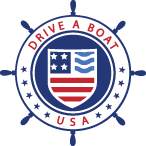The Dangers of Carbon Monoxide on Boats: California Regulations
Gasoline engines and generators on boats emit carbon monoxide, an odorless, colorless gas that is extremely hazardous and sometimes lethal. This gas can easily accumulate on and around boats, poisoning unwary boaters.
Find out where carbon monoxide accumulates on boats, the signs of CO poisoning and how to keep yourself and others safe on the water!
Symptoms of carbon monoxide poisoning
Carbon monoxide makes it more difficult for your blood to deliver oxygen to your body. Inhaling it results in symptoms such as headache, dizziness, nausea, vomiting, confusion and fainting. These symptoms are easily mistaken for seasickness or intoxication, meaning that CO poisoning is often not recognized in time.
Inhaling carbon monoxide can cause illness within seconds, and death can occur when exposed to high concentrations of the gas or when exposed over a long period of time.
Common causes of carbon monoxide accumulation on boats
Engines and generators tend to vent towards the rear, which leads to more carbon monoxide accumulation near the stern of the boat. This can pose a problem for vessels equipped with a rear swim deck or water platform. There is also a phenomenon called back drafting or the station wagon effect, where air moves along the vessel and creates a low-pressure area in the rear, where CO may accumulate and recirculate back through the boat.
A lack of ventilation can also trap carbon monoxide on a boat. Vessels with overhead canopies and those moving slowly or idling need to beware of this, particularly when the wind is blowing from the stern.
Teak surfing
Teak surfing, an activity where swimmers hold onto a boat’s swim platform or transom and are towed behind it, has been the cause of many carbon monoxide boating accidents. Teak surfing is now illegal in California.
Carbon monoxide boating regulations in California
In accordance with California boating laws, all new and used motorized vessels sold in California on or after May 1, 2005 are required to display a set of carbon monoxide warning stickers on the transom and helm. The DMV sends the required decals and an information brochure along with every vessel registration in California.
How to avoid carbon monoxide poisoning while boating
- Carbon monoxide detectors: Most boats come equipped with marine carbon monoxide detectors. If yours does not, there are portable detectors available for purchase.
- Ventilation: Make sure your craft is well ventilated.
- Exhaust system: Inspect your exhaust system regularly to make sure it is in good working order. Check for leaks, discoloration and obstructions, and seal any gaps you find.
- Avoid idling vessels: Steer well clear of other idling vessels, which are a major and often overlooked source of carbon monoxide.
Stay safe on the water with Drive a Boat USA
There is a lot of important information boaters need to know in order to stay safe on the water. With Drive a Boat USA’s boater safety course, you can learn everything you need to know online and take the exam to obtain your California Boater Card. Sign up today!

